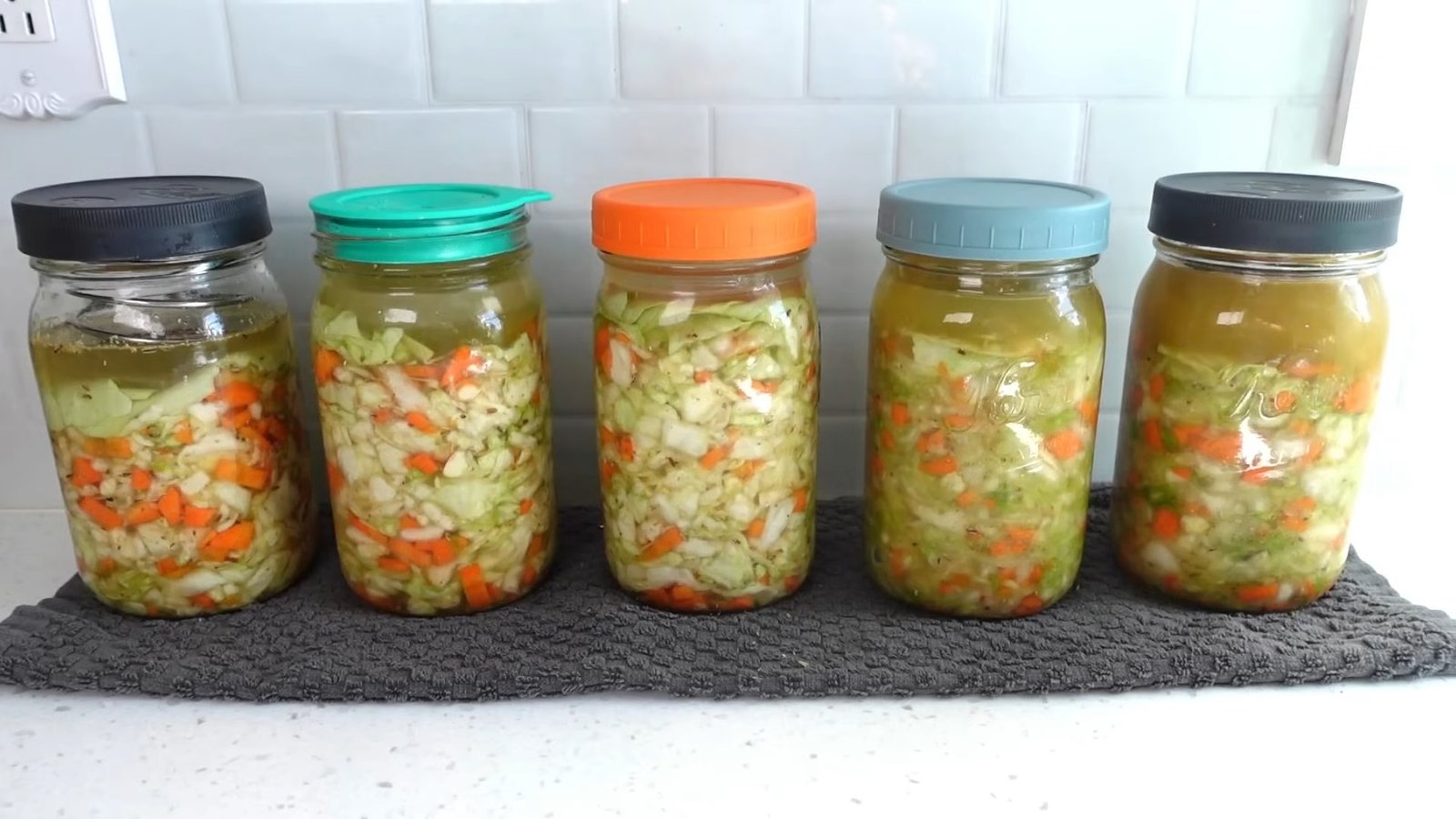

If you're ready to take your first confident step into the world of home fermentation, this complete sauerkraut masterclass is for you. In this comprehensive guide, you'll learn how to make delicious, probiotic-rich, nutrient-dense sauerkraut from scratch. Whether you're using garden-fresh cabbage or store-bought, this article walks you through every stage of the fermentation process—from Day Zero through Week Three—so you’ll know exactly what to expect, what to look for, and how to store your finished kraut safely for long-term enjoyment.
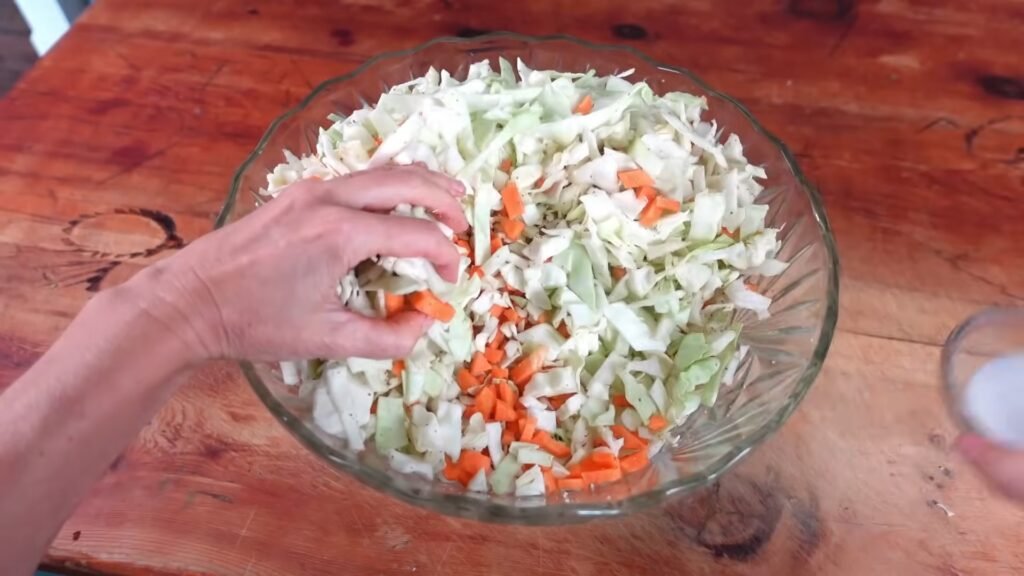
Why Homemade Sauerkraut?
Sauerkraut is a powerhouse of probiotics, enzymes, and beneficial bacteria. It's one of the most reliable ferments, especially for beginners. Cabbage is remarkably resilient—even conventionally grown cabbage with surface treatments still ferments beautifully, making it a nearly foolproof starting point for home fermentation.
Chapter 1: Preparing the Cabbage
Start with a cabbage that weighs around 4 lbs (2 kg), though any size will do—just expect a larger or smaller yield. Remove any bruised or bug-eaten outer leaves and set aside two to three of the best inner leaves to use as fermentation toppers. Quarter the cabbage, remove the core (which you can save for soups or stock), and slice the cabbage crosswise into chunky shreds.
Expect about 17–18 cups (approximately 1,425 grams) of shredded cabbage. Place it in a large mixing bowl—glass, stainless steel, or food-safe plastic is fine for this stage.
Chapter 2: Adding the Flavor Boosters
To enhance flavor and nutritional benefits, add the following:
2 cups (250 g) of chopped carrots – peeled for the best taste
1/3 cup (50 g) fresh ginger root – adds zing and supports gut health (optional)
Freshly ground fennel seeds – or substitute with dill or caraway seeds
Grinding whole spices releases essential oils, polyphenols, and nutrients that dried, pre-ground spices lack. This step is key to making your kraut taste vibrant and fresh.
Chapter 3: Salting the Cabbage (Dry Salting Method)
Avoid salts with anti-caking agents as they can interfere with fermentation. Use 34 grams (2 level teaspoons) of pure fine salt. Sprinkle it gradually over the cabbage mixture, tossing as you go. Let it rest for 30 minutes to 2 hours—this allows the salt to pull moisture from the cabbage, creating a natural brine.
Chapter 4: Tenderizing the Cabbage
After the rest, massage the cabbage thoroughly. You’ll begin to see brine forming. Use your hands or a kraut pounder to press the cabbage and draw out more juice. Let it rest again for 15–30 minutes. When ready, the cabbage should be soft, and a visible layer of brine should form at the bottom of the bowl.
Chapter 5: Packing the Jars
Wash your jars, lids, and weights in hot soapy water—no need for sterilization. Using a canning funnel makes loading easier. Press the cabbage mixture firmly into the jars, ensuring it’s submerged under the brine. Add the cabbage leaf topper, press down, then add a fermentation weight.
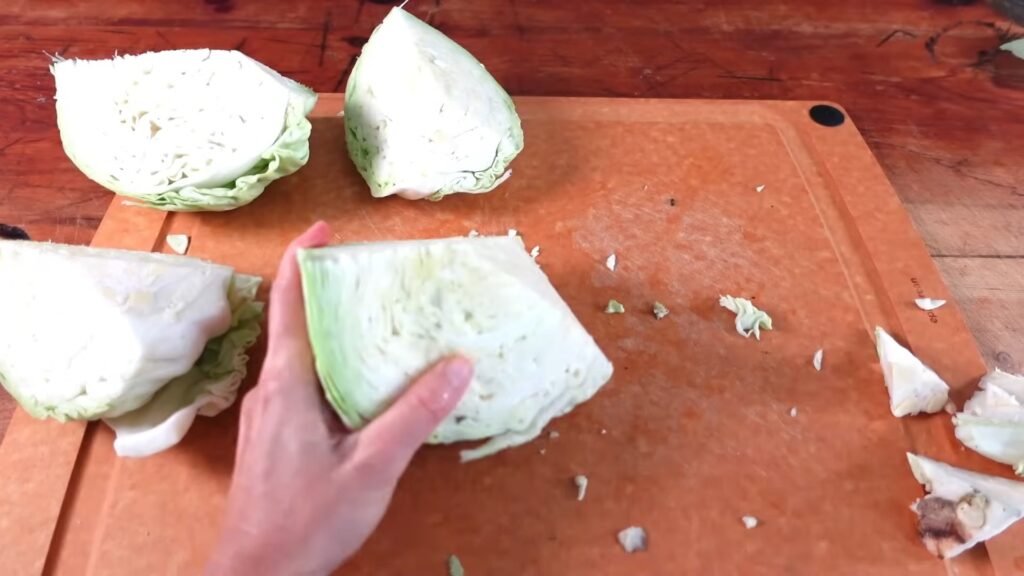
Fill the jars about 75–80% full. Use a loose-fitting lid or a fermentation lid system that allows gases to escape. If you’re using a specialty fermentation lid, such as Ball brand with a spring and valve, follow the manufacturer’s instructions for use.
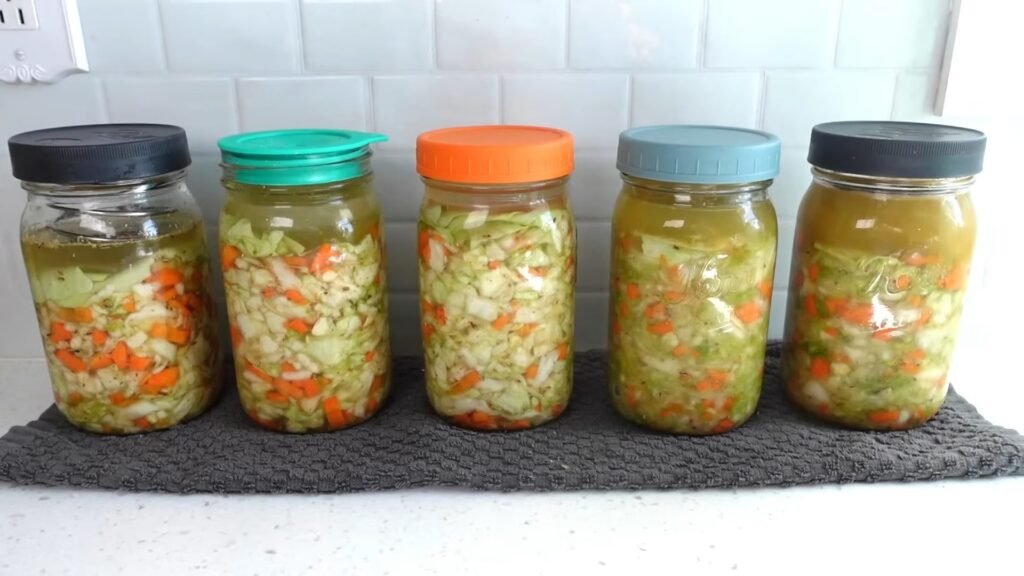
Troubleshooting: What If My Cabbage is Dry?
If your cabbage doesn’t release enough moisture after salting, don’t panic! Add 3 cups of clean, non-chlorinated water to the mixture to create a brine. Let it sit for 15–30 minutes before packing your jars as usual. Always ensure the cabbage is submerged to prevent mold.
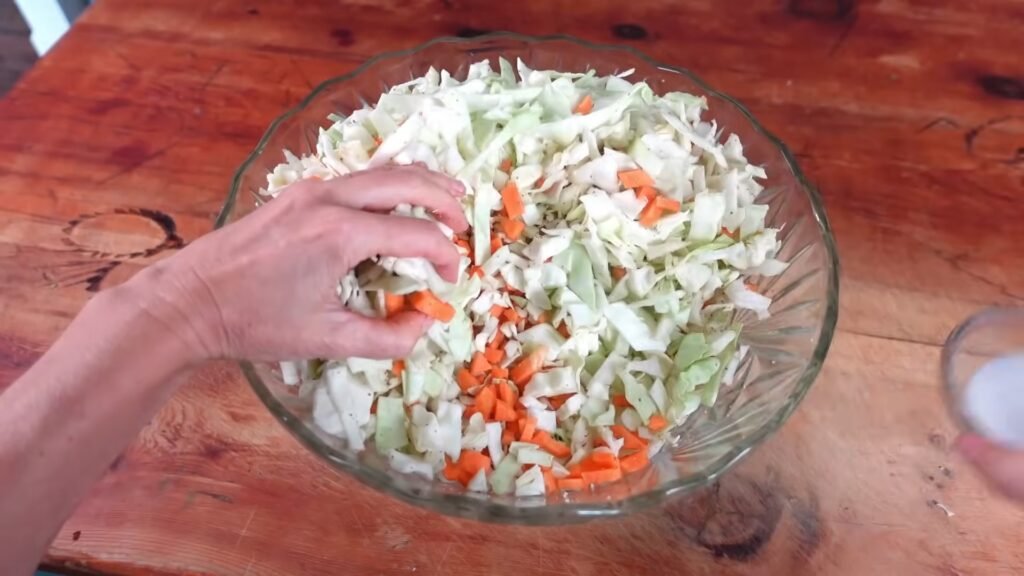
Chapter 6: The Fermentation Period
Leave the sauerkraut at room temperature for 21 to 30 days. Here's what to expect:
Days 2–4: Bubbles form as CO₂ is released. This may push the cabbage upward, so make sure your fermentation weight is in place.
Color change: Cabbage becomes duller, and the brine turns cloudy—a good sign indicating a drop in pH.
pH levels: Healthy fermentation causes the brine’s pH to fall below 4.5, inhibiting bad bacteria and preserving the kraut.
Common Issues During Fermentation
Floating Cabbage: A fermentation weight is essential to keep the cabbage submerged.
Mold Growth: Caused by exposure to air. Always ensure everything stays beneath the brine.
No Bubbles? That’s okay—some cabbage varieties ferment more quietly. Look for changes in smell, color, and brine cloudiness as other signs of active fermentation.
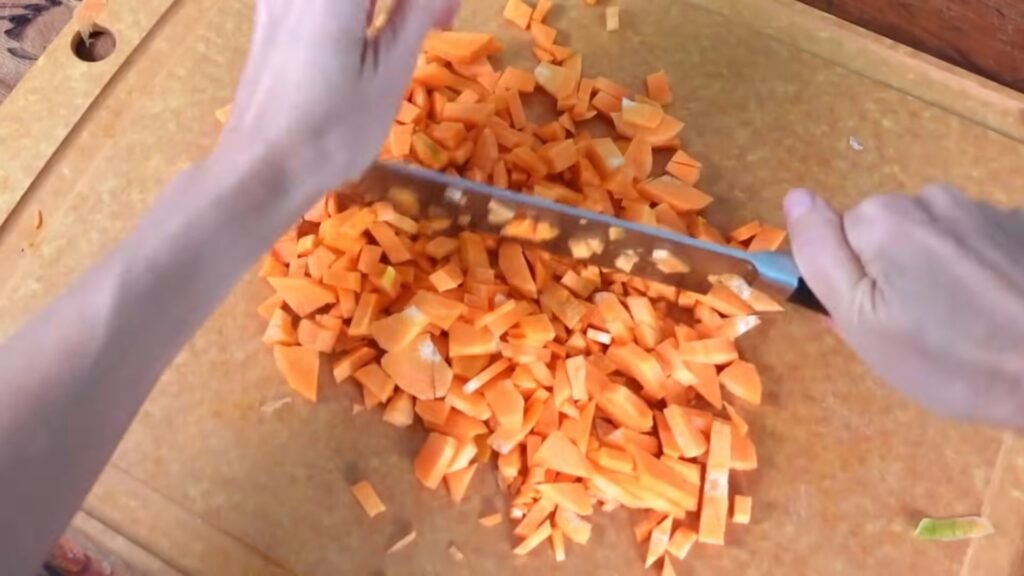
Final Tips for Sauerkraut Success
Use high-quality water if your tap water has chlorine or chloramine.
Don’t overtighten the lid—gases need to escape.
Revisit the video chapters if you need to troubleshoot or review a specific section.
Watch the linked videos on fermentation lids, three stages of fermentation, and brine safety tips for deeper learning.
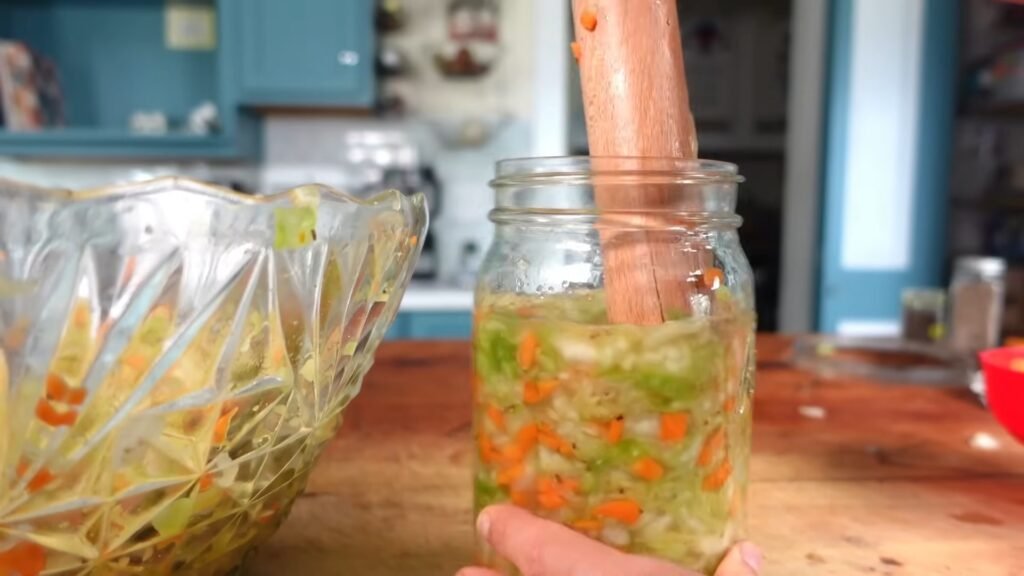
0 servings